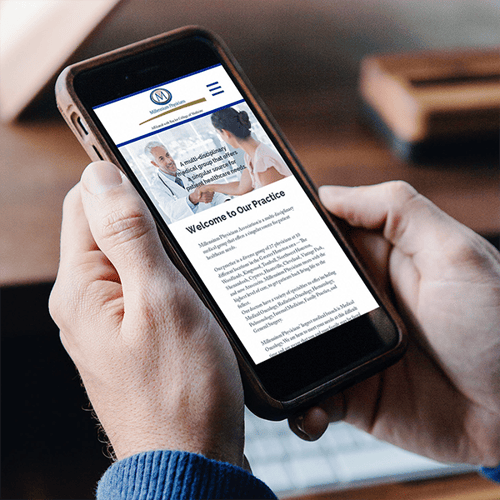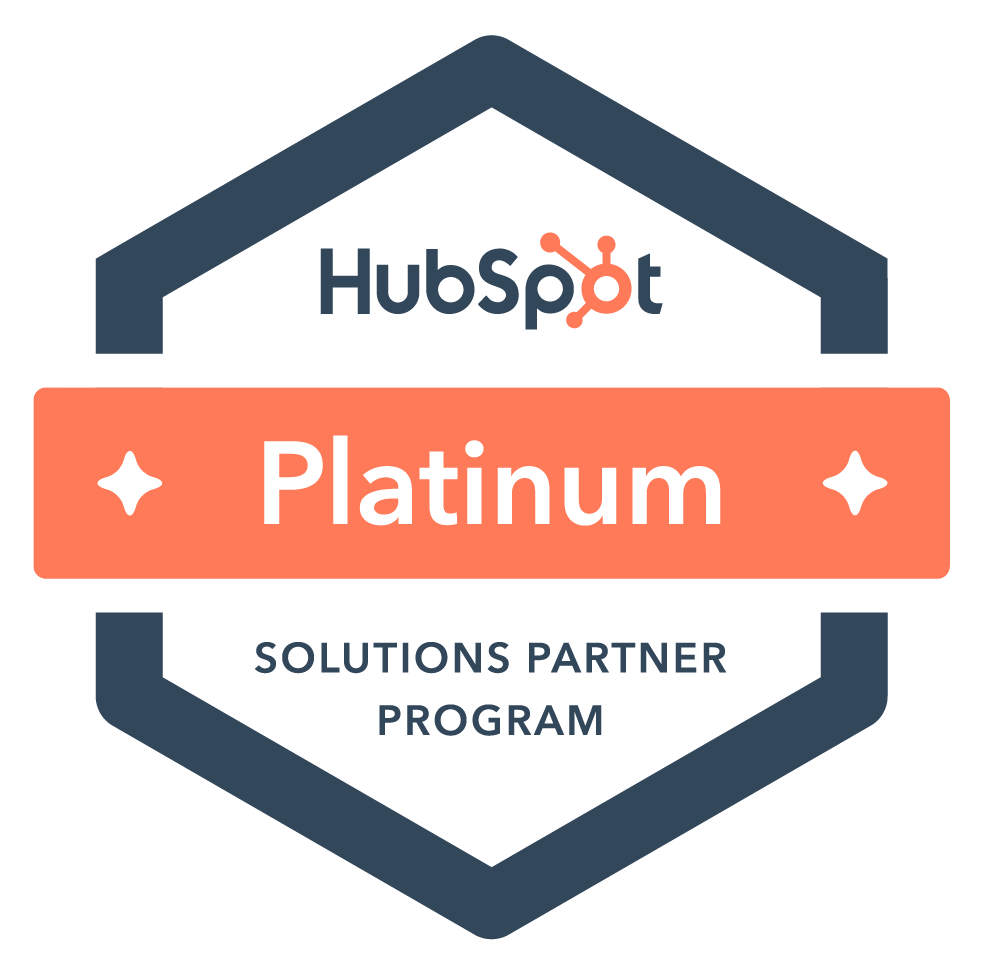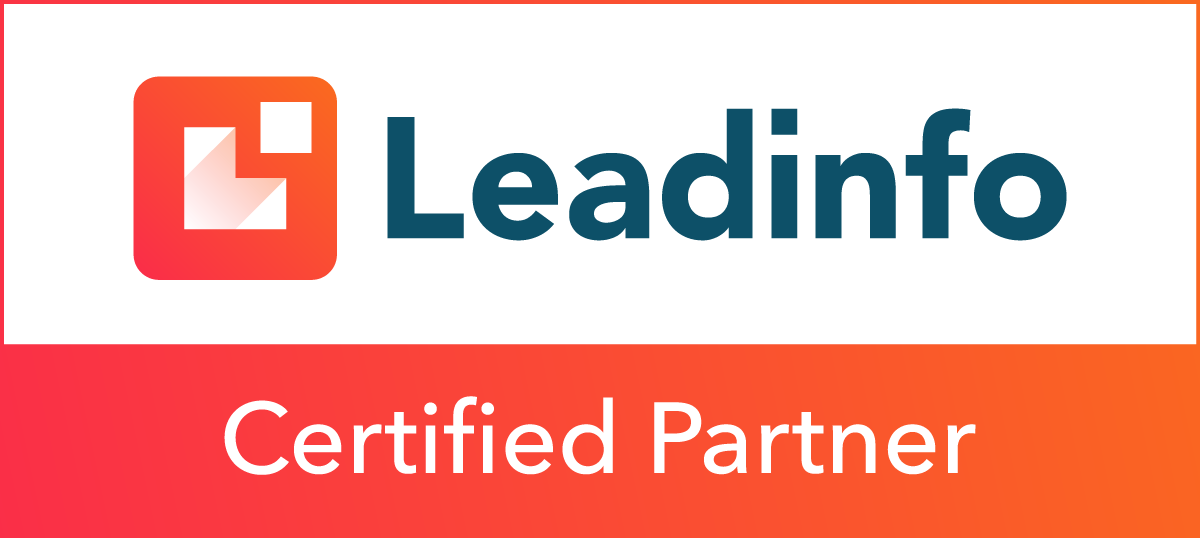
Blog

An Overview of Growth-Driven Design
Your website is one of your most important marketing assets, and it's your top sales person. The aim of growth-driven design is to optimize its results — the traditional model for web design doesn’t properly address continual, impactful site improvement.
Traditional web design involves planning every step of the timeline, including all delivery and approval dates. All too often, projects go over budget and past deadlines. Instead of iterating, everything but the kitchen sink is shoehorned into the site, often without any idea as to whether or not the design is optimized for solving customer problems. Some business owners just want to “make it like my competitors’ sites,” which assumes the competitors knew what they were doing. For all anyone knows, they did the exact same thing: the second widget company copied the first widget company, the third copied the second, and the first hired someone who converted a fashion website template into a widget site.
Another challenging request is “build it like this cool shoe website.” We can do that, but what if you’re not selling shoes? The optimal user flow for shoes may not lend itself well to someone responsible for determining the best deal for the right quality of bulk PIV valves. At the very least, it is wise to take your research and personas and run them through the user processes on the competitor sites in order to evaluate whether or not their execution leverages a proven, optimal user experience. Mimicry also discounts the value inherent to differentiation. When it’s all the same, the customer is likely gonna go with the first search result she clicks on. However, word gets around when an experience delights. At the center of delight is an experience that assists consumers with finding valuable information that supports their purchase decisions, assists them in determining the available solutions to their problem, figures out which solution is best for them, and pulls the trigger on it as quickly and painlessly as possible.
Building an entire website in one fell swoop and then tossing it out into the world, hoping for the best, is a risky endeavor. Enter Growth-Driven Design, a smarter approach to web design that reduces the risks associated with traditional web design. By learning about your visitors using HubSpot tools and other value-driven services, growth-driven design allows for continual, impactful improvements to site performance. Impactful improvements are key.
We’re looking for strong, valuable effects. We want to make a positive impact on user behavior. Otherwise we’re just shuffling elements around the page because we saw some other website “do it like this.” Or we’re changing certain colors to navy blue because it has been Rick’s favorite color since first grade. Or Steve’s wife, who is an interior decorator, said the horizontal rule should be marigold. Were the primary function of marketing materials to exist so we can see how successfully we can copy another, or to appease Steve’s wife and Rick’s proclivities, we could likely dub the end result as successful.
But our primary aim should be to facilitate user goals in the most informative, effective, productive manner possible. While some users may share Rick’s love for navy blue, what they actually need is to understand the meaning and implications of facts and figures. Out of respect for these users, thoughtful effort ought to be applied to minimize frustration and help them succeed as fluidly as possible. Design should catalyze their need to comprehend data and execute their tasks. These collections of words and numbers are raw data that needs to be thoughtfully designed so as to translate the data into relevant information for users. Doing so will add value to people’s lives. Failing to do so results in frustration and information anxiety.
Growth-Driven Design brings measurable business value to the process and improves the entire company as helpful information gathered on customer behavior is shared with other departments within the company. This allows all areas of the company to further help users achieve their goals, not only when using the website but also via other points of customer contact.

The Growth-Driven Design methodology has three major stages: the strategy, the launch pad, and continuous improvement.



There's quite a bit of depth to each stage, so I'll just be touching on the top-level views with a handful of subtopics for each. The goal is to quickly build a website that looks and performs better than the current site, or if there is no site yet, establish a solid starting point. This starting point is Stage 2 (more on that after Strategy). It's called a launch pad and is the foundation for building upon and optimizing over time. It's best to launch quickly (without sacrificing quality) and begin to collect data from real users interacting with the site in order to make better, data-driven decisions on improvements.
1. Strategy
Develop an empathetic understanding of your audience’s world and how the website can solve problems along their journey.
- Business and website goals: Define the website's goals. This can be done by reverse-engineering the overall business goals. Now identify how the website will influence these goals. Utilize SMART goals in order to properly measure the website's impact on the business.
- User experience (UX) research: Uncover user insights that guide you through the rest of the strategy stage.
- Jobs to be done: A framework to help identify the underlying needs that drive your audience and what it takes for them to switch to your company’s products and services as a solution.
- Fundamental assumptions: Boil down what you already know about your market, your business, and your website. Refine or create new user problem statements, unique value propositions, situational triggers, current user habits, switching anxieties, and more. Fundamental assumptions are at the core of the success of your users, business and website.
- Buyer Personas: Develop personas using the deep understanding of your audience that's been gained.
- Journey mapping: Forecast and map the persona’s journey of what happens before, during and after they interact with your business. By mapping your persona’s journey, you’ll have a direction for how to weave your website into your persona’s life and solve their problems along the way.
- Global strategy: Develop a website-specific strategy that includes elements such as site architecture, on-site SEO, key sections and pages, integrations, technical requirements, and more.
- Brainstorm wish list: The website wish list will have anywhere between 75 and 200 different ideas, including site elements, sections, pages, specific features and modules, integrations and more. With a strong wish list of high-impact ideas, you’ll begin the second phase of the Growth-Driven Design methodology, which is the launch pad website.
We want to get the new site up as quickly as possible without wasting time by tinkering with the holdups of bells and whistles. Once it's up, we can set up metrics to test hypothesis on improvements and see if they're valid or not.
2. Launch Pad
Quickly build a website that looks and performs better than what you have today, but is not a final product. Rather, your Launch Pad is the foundation on which to build and optimize from.
- Customizing an acceleration approach: Determine the key areas you can focus on to accelerate the launch of a remarkable and effective website.
- Running sprint workshops: Run design sprints on high-impact pages and sections. A design sprint is a short, concentrated time period focused on solving a problem using brainstorming, design, prototyping and testing.
- Effective content development: Create an effective content-development process and leverage great content-collaboration tools in order to accelerate your content production speed and increase the quality of the content produced.
- Investing in internal efficiencies: Switch from a waterfall process to an agile or scrum process. Build an internal library of assets, and remove as many developer dependencies as possible so marketers can make updates on their own. Dotting "i's" and crossing "t's" isn't the best way to maximize ROI when it comes to professional time.
3. Continuous Improvement
With a launch pad site live and collecting user data, you can start identifying the high-impact actions you can take to grow your business.

- Plan: Determine what are the most impactful items to build or optimize are at this point in time in order to drive us toward our goals.
Example High Impact Statement
As [PERSONA], when [SITUATION], I want to [MOTIVATION] so I can [OUTCOME].
Example Hypothesis Statements
For [PERSONA] visiting the [PAGE], we believe changing [CURRENT ITEM] into a [PROPOSED SOLUTION] will [OUTCOME AND METRICS].
For [PERSONA] interested in purchasing [PRODUCT], we believe that [PAGE/FEATURE/CONTENT] is unnecessary/confusing and [PROPOSED SOLUTION] will [OUTCOME AND METRICS].
- Build: Organize sprints with a cross-functional team to complete the high-impact action items.
- Learn: Review the experiments you've run to extract learnings about your audience.
- Transfer: Share your learnings and exchange ideas throughout the company to improve the entire system, not just one of the parts.
- Repeat the Cycle: Continuously move through the cycle, building momentum each time. Repeat the cycle every two weeks and continue to build action items in order to hit the “focus metric” goal, then move to the next primary focus.
We're experts at all aspects of web design — including Growth-Driven Design, inbound marketing strategies and SEO services. Contact us today to find out how we can help your website achieve the best results.
Subscribe to email updates
Recent posts

Related Articles
Topics

Topics

Topics






